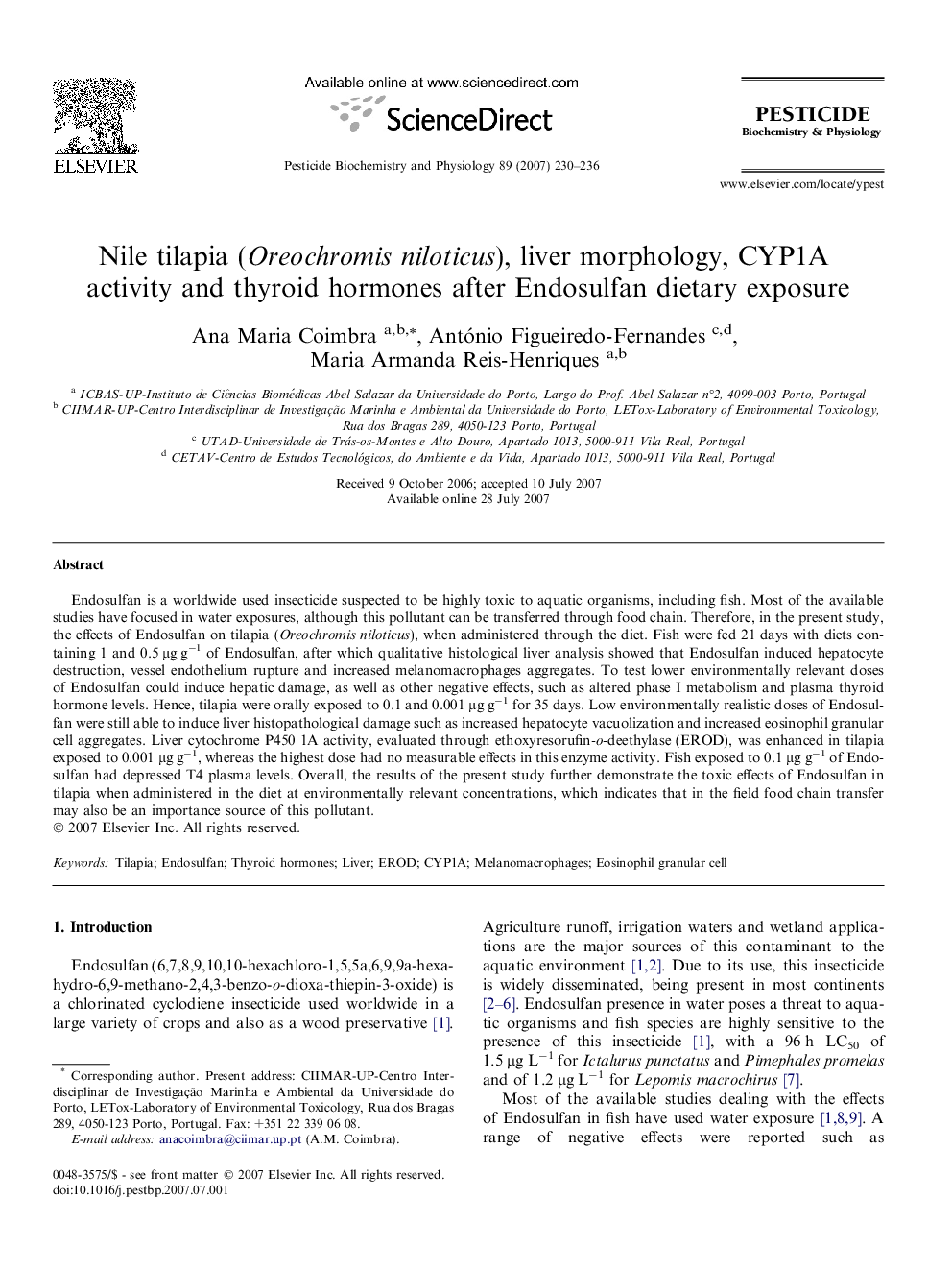| کد مقاله | کد نشریه | سال انتشار | مقاله انگلیسی | نسخه تمام متن |
|---|---|---|---|---|
| 2010156 | 1066716 | 2007 | 7 صفحه PDF | دانلود رایگان |

Endosulfan is a worldwide used insecticide suspected to be highly toxic to aquatic organisms, including fish. Most of the available studies have focused in water exposures, although this pollutant can be transferred through food chain. Therefore, in the present study, the effects of Endosulfan on tilapia (Oreochromis niloticus), when administered through the diet. Fish were fed 21 days with diets containing 1 and 0.5 μg g−1 of Endosulfan, after which qualitative histological liver analysis showed that Endosulfan induced hepatocyte destruction, vessel endothelium rupture and increased melanomacrophages aggregates. To test lower environmentally relevant doses of Endosulfan could induce hepatic damage, as well as other negative effects, such as altered phase I metabolism and plasma thyroid hormone levels. Hence, tilapia were orally exposed to 0.1 and 0.001 μg g−1 for 35 days. Low environmentally realistic doses of Endosulfan were still able to induce liver histopathological damage such as increased hepatocyte vacuolization and increased eosinophil granular cell aggregates. Liver cytochrome P450 1A activity, evaluated through ethoxyresorufin-o-deethylase (EROD), was enhanced in tilapia exposed to 0.001 μg g−1, whereas the highest dose had no measurable effects in this enzyme activity. Fish exposed to 0.1 μg g−1 of Endosulfan had depressed T4 plasma levels. Overall, the results of the present study further demonstrate the toxic effects of Endosulfan in tilapia when administered in the diet at environmentally relevant concentrations, which indicates that in the field food chain transfer may also be an importance source of this pollutant.
Journal: Pesticide Biochemistry and Physiology - Volume 89, Issue 3, November 2007, Pages 230–236